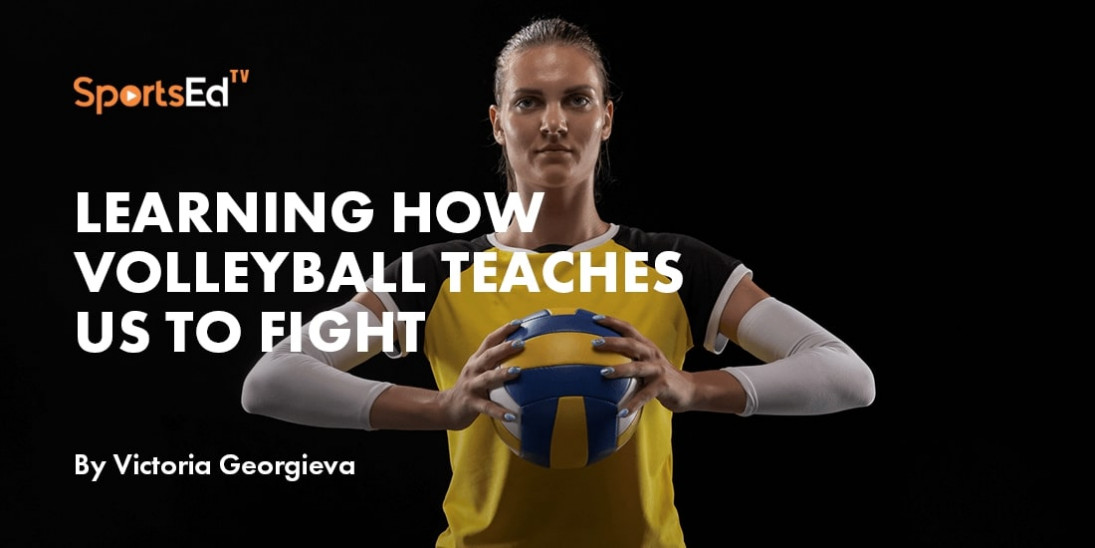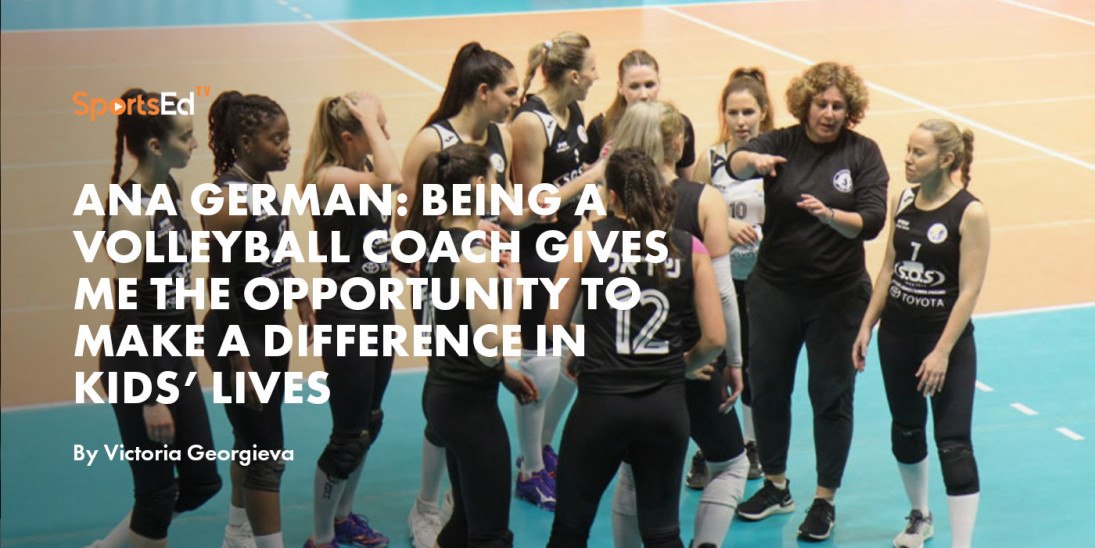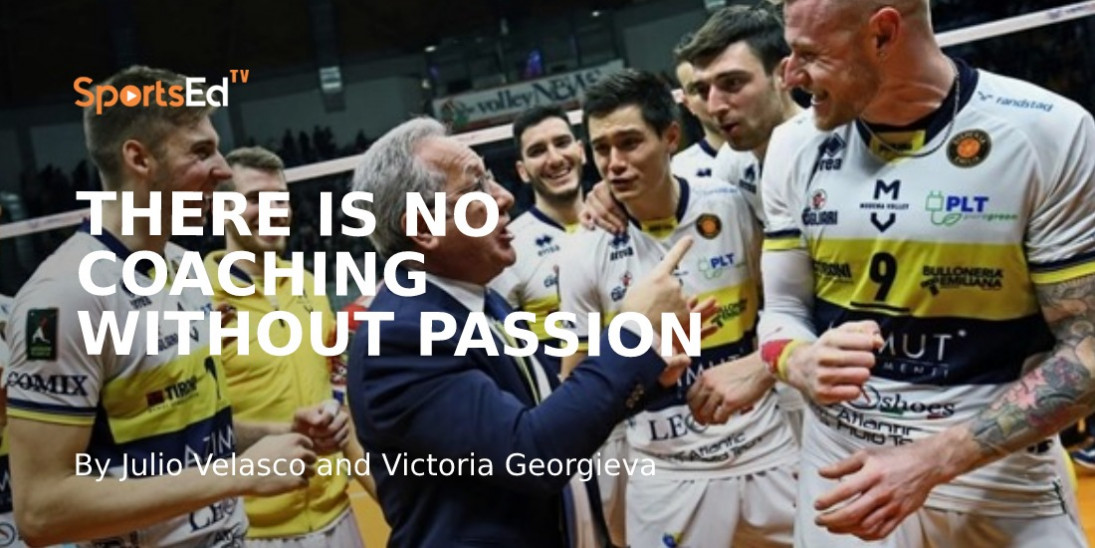Volleyball
Welcome and thanks for visiting...

What Does It Take To Become a Good Libero?
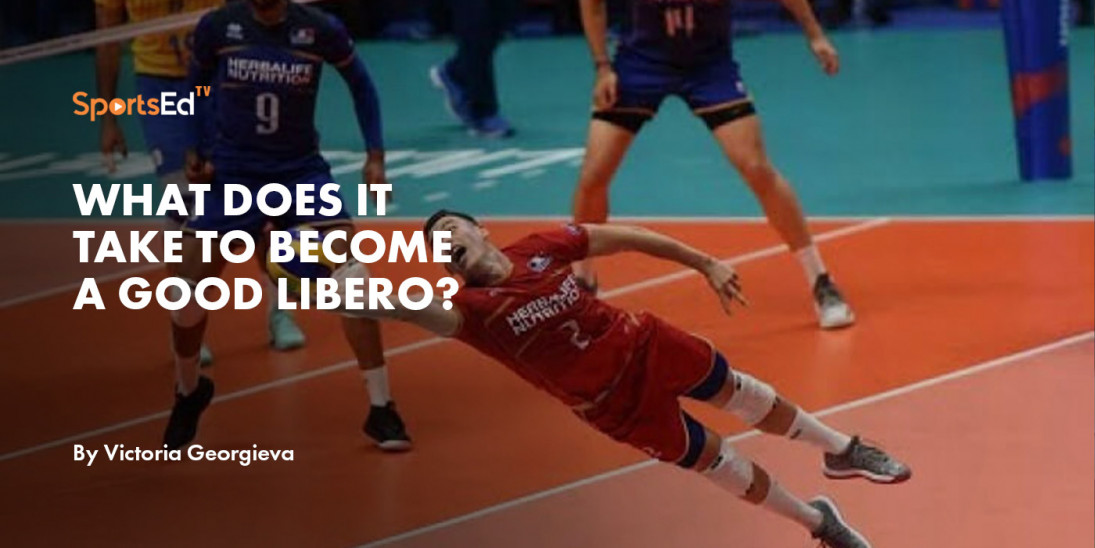
At a young age, most of us who had taken up on the sport of volleyball, thrive to be the ones who are in charge of hitting hard the ball. We want to do that outstanding spike and amaze our coach, our teammates, and the public in the sports hall (during matches).
I also had such a period myself. I recall this happened around my 14th birthday – the time when my team and I had started taking the shape of a real squad, each one of us with our relative duties on- and off the court. It was past the years of “getting to know each other” and more of “ok, how are we going to do this?”.
I was dreaming of being able to spike hard. But sincerely, I wasn’t the best in this position. I had my moments (I even remember my first training under the coaching of the popular Bulgarian coach, Viktor Karagyоzov, and a round of applause dedicated to me, because of a great spike that I had done).
I remember the satisfaction and the adrenaline, oh, I do!
I tried to keep up for some months doing some attempts to convince my coach I can become a good spiker, but eventually, I had to give up and change to setter. It became my role until the end of my career.
Becoming a setter, however, wasn’t an easy choice. I had some serious talking with my head coach on why to start in this position. Was I able to do it right? Had I the qualities to lead by setting?
To be fair, becoming a setter worked much better for me and it gave me the feeling of being in control, and becoming a decision-maker (and the respective responsibilities, of course).
But why am I telling you this story? Wasn’t this article about the libero position?
I promise it will all fall into place.
By the time I started realizing that I won’t be the one wow-ing people in the hall with amazing spikes, I was seriously in doubt about what to do next. My coach was rooting for the setter position, and I had my eyes on the libero.
I just loved it! In the beginning of each training, I would go earlier and with my teammates coming, I would ask them “to attack” me with spikes and serves, trying to save the ball, run, fall, and “fly”.
This “reception game” was my favorite pre-training moment and I was seriously considering becoming a libero.
The emotion of saving a ball no one expected you to, was giving me the same level of adrenaline as a successful spike would do. The only difference was that I had more successful savings than successful spikes. So, more adrenaline and more moments of pure happiness on the court.
This is why I loved (and still do!) so much the position of a libero. It is a “hustle-for-the-ball” game that brings you a lot of joy!
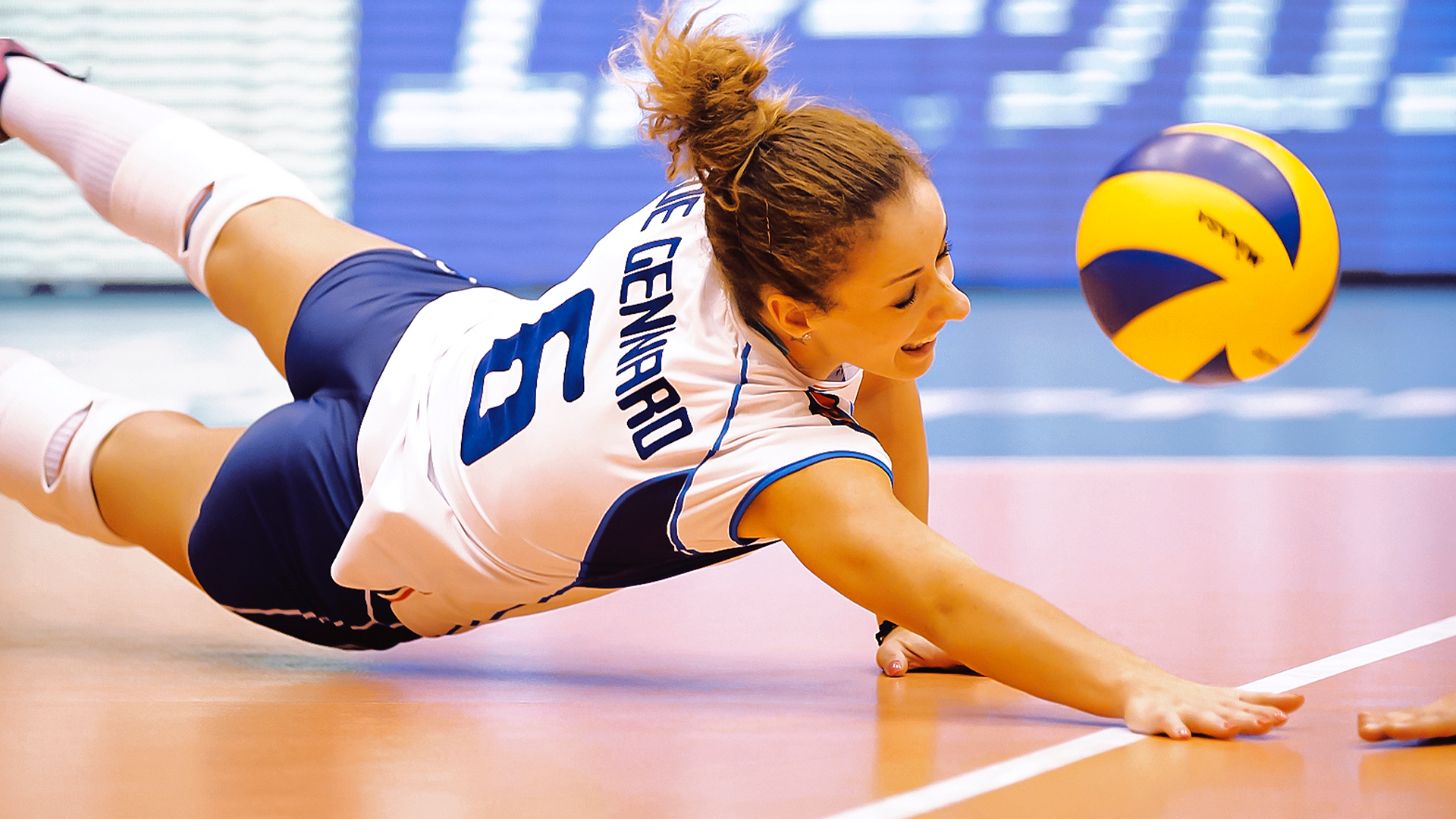
Monica De Gennaro, source: Volleyball.World
I suppose many of you know what the libero is, but just in case, let’s all refresh our minds.
What is a volleyball libero?
The libero is one of the positions in volleyball, and is often called “the specialist in reception and in defense”.
The libero enjoys “a special freedom” on the court, as they can continually go in and out of the field, usually substituting the center player or anyone else who is in a defensive position by rotation. The main goal of this substitute is for the libero to enter and “cover better” the zones where a supposed attack (or serve) would go. Counting on the libero, the team can boost and improve their performance and efficiency in reception.
The International Volleyball Federation (FIVB) introduced officially the role of the libero back in 1998, while in the States it became an official position in 1999. Once again, the Italians were one step ahead of the rest of the world, as they first introduced the libero in the late 80s and the early 90s of the XXth century.
Actually, the word “libero” means “free” in Italian – free to move around and to save the ball. When the ball is not in play, the libero can replace any back-row player, without prior notice to the officials.
Being “the different player” on the court, and having this additional freedom, the libero is also this player that is visibly different from the others. And by this, we mean that the libero must wear a contrasting jersey color from their teammates.
Why was the libero position introduced?
Introducing the position of the libero, FIVB had two main motifs behind this decision: A) to increase the duration of actions, and B) to allow shorter players to specialize in reception and defense.
Of course, there were other marketing strategy factors related to this decision, since adding the new role of libero (and adopting the special set of rules related to this position) would draw more attention of the television spectators.
From a time perspective, we can definitely say that the liberos in today’s volleyball play a key role in the performance of a team, and have helped a lot to make the game of volleyball more entertaining, inspiring many around the globe to watch and enjoy it.
Thanks to the work of the libero, more defensive plays are being produced. This means more longer and outstanding rallies that keep fans around the world following the game for a longer period.

Back in the time: Serginho (BRA) in action
What are the main duties of the libero?
Being “the different player”, the libero also works upon different rules on the court.
Liberos specialize in defense, and put a special focus on the serve reception, too. The main goal is to keep the ball away from the court and give a response to the attackers’ spikes.
The liberos usually:
- Have the first contact of the play
- Substitutes of middle blockers
- Have a supporting role, helping the team to start organizing the game
- Are the best passers in the team
Liberos are not allowed to:
- Attack from anywhere if at the moment of contact, the ball is entirely above the top of the net
- Block (no attempts at all)
Mainly, the libero acts in the back-row positions (1, 6, and 5). However, with the game unfolding, we can see him/her in the other zones, being a “backup defense” for the attackers, for example, or running out of the court, trying to save the ball.
Biggest pro for the coach?
The replacements that involve the libero don’t count as regular substitutions. While they are unlimited, they should happen only when a rally in between takes place.
Each team can have a maximum of two Liberos in its squad. Don’t forget that the libero may only be replaced by the starting player who had been substituted or by the second Libero.
Now that we have refreshed our knowledge on the libero position, is time to answer the question of how to become a good libero?
How to become a good libero?
While there are some general rules that we will discuss in this material, before doing so, it is important to highlight that as in all the sports and in all the positions in volleyball, what matters most to become a good player… is to stay true to yourself.
You can learn (and you should); you can train hard (and you should); you can work on your technical skills (and you should) but most importantly, you should stay true to your personal style and to your instincts on the field.
On your checklist, you should always try to tick a box called “a balance between who I am as a player and what can I ‘steal’ from others” (metaphorically speaking).
Because you can follow step by step the example of others, but without putting your soul into it, you will not reach your limits. To put your soul, you need to be yourself.

Brenda Castillo (DOM)
Having said this, let’s explore together what can help you to become a good libero:
- Keep your eyes on the ball! – Or in other words, stay alert! Watch the game carefully and don’t get distracted even for a microsecond. Concentration is the key, so be sure to work on your ability to be aware of where the ball is at each moment of the rally.
- Run, run, run! – Go after it! There are spectacular examples of how liberos save balls no one expected them to. The best ones run and don’t stop thinking “Oh, that’s too far away! I can’t do it!”. Moreover, watching matches for so many years, I have seen liberos “flying” above journalist tables, going to the public in an attempt to save a ball and pass it to their teammates. Sometimes it doesn’t work, but the times it does, it amazes everybody in the hall and boosts the team’s confidence.
- Work on your reaction time! - Improve your “cat-like reflexes” and your explosiveness! I don’t know if you are a cat person, but even if you are not, you might have noticed that cats are famous for their quick reactions. As if they “explode” out of nowhere. Good liberos are known for having such reactions, too. Their main goal is always preventing the ball from hitting the floor. Playing volleyball, you know this sport is not so physical (meaning that you don’t have that many direct encounters with the opposite players) but at the same time, volleyball is an extremely fast sport, with great speed and intensity, and requires the player to have quick reactions and reflexes.
- Don’t forget about your digging drills! - Repetition is the key! While your main goal as a libero is to save the ball, the main goal of the opposite team is to make it difficult for you. Your opponents will mostly try to do so by using sharp attacks and strong serves. So you need to be ready for this! Most of the time, if the opposite team does their job right, the balls you are supposed to save as a libero, won’t be easy ones. They will fall very low and it will be a matter of quick reactions and good digging skills to save them. You need to master this and know more about how to roll over the shoulder, roll “sideways”, how to dive or how to do a “pancake” (diving and pancakes are more or less the same, with the only difference that by “pancaking” the player has one arm straightened out). Ask your coach to assign to you some more time and exercises to work on your digging drills. And always think about your body position – keep it “flexible and open”, ready to react.
- Become the best-prepared serve receiver! – Do your homework! In this “cat-and-mouse” game of tactics, both your- and the opposite team, will try to trick each other. The opposite will try to lead their serve to the players who are not the best receivers, while your task is to “have their backs” and to predict where the opponent’s serve will go. Remember that from what your reception response is, will depend on the organization of the game (passing, setting, and attack, it all starts with the reception).
- Don’t forget to work on the other components! – While as a libero you are not allowed to perform block or serve, you never know if and how some parts of these elements will help you to do your job as a libero better. Being in control of the other volleyball components will help you “to feel your body” better and to perform better in your defense duties. Sometimes, you will need to use your right or left hand not only to dig but to try to save a higher ball (after a block-out, for example). So make sure to have the whole spectrum of movements well developed.
- Stay resilient! – There will be moments when you will need to come back after a bad move on the court or when you will need to save balls and balls, again and again, run a lot during long rallies, and put up a real fight on the court. You might get tired, you might have some setbacks. In all these cases, you will need to remain resilient. Don’t forget about the importance of self-talk not only during a match but also during practice. Thrive to develop your resilience, as it will help you to better handle difficult situations on the court.
- Communicate with your teammates! – And do it often! When ready to receive a serve or during a quick action in the game, always make sure to communicate with your teammates so it is clear who will save the ball. Many times, especially when a team is starting from zero and players are adapting to each other, it is not about the lack of skills but about the lack of communication. As a libero, you need to communicate, scream “I” when saving a ball, and avoid confusion.
- Be there and ready to help! – Don’t forget about your supporting role, and cover your teammates always when possible. If your attacker is trying to spike and you see the opposite players are organizing a block, be there and cover „the hole”. If you see your teammates organizing a block, don’t forget that the attacker might want to play it tricky and instead of spiking hard, they might slip the ball softly behind the block. Be there and cover it.
- Bring joy and motivate your teammates! – Often and to no surprise, you will see the liberos as the figures on the court who express a lot of their emotions and who are the magnet to their teammates after a successful action. The libero can bring a special kind of “fire” on the court and inspire others.
As you can see yourselves, the position of a libero has a wide spectrum of opportunities to work on. And for sure, you can understand my big dilemma back then when I was 14. Even though I focused on setting, I will always have a part of my heart dedicated to the libero position.
Being a libero, you are taken away from the possibility of spiking hard. However, the libero position gives you a lot more in exchange. Most importantly, it feeds your soul with volleyball passion and excitement.
−−−−−−−−−−−−−−−−−−−−−−−
Bonus: Learn from the best!
Nowadays, we are lucky to be able to follow our volleyball stars on social media. Take the best out of the possibilities and learn from the best!
Here are my Top 3 lists for both Men and Women.
Men Women
Sérgio Dutra Santos ‘Sergihno’ (BRA) Monica de Gennaro (ITA)
Jenia Grebennikov (FRA) Brenda Castillo (DOM)
Erik Shoji (USA) Lin Li (CN)
Dive into the world of Libero’s actions!



